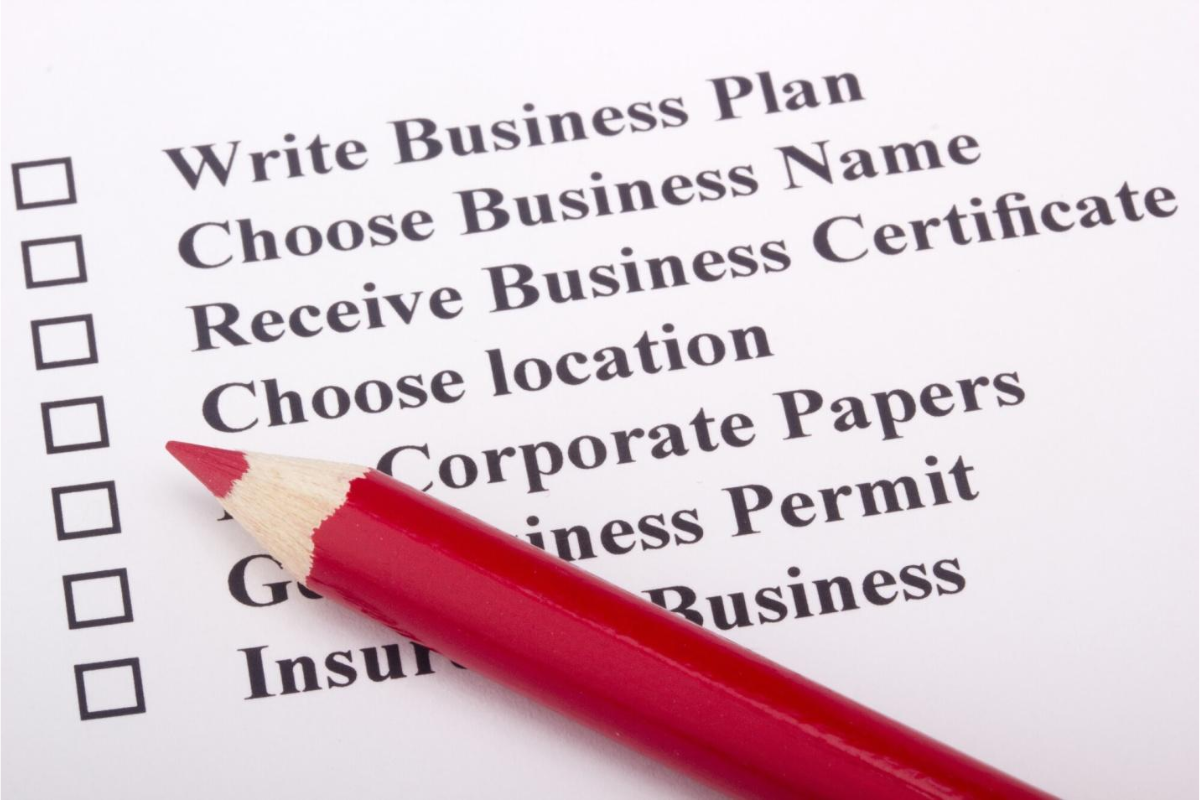Every year in America, over half a million businesses close or fail. But don’t allow that to deter you from starting a business.
If you create a new business checklist you give your company a better chance to thrive.
If you plan to start a business, it can help you formulate a business plan to put you ahead of the pack.
Read on and learn how to create a checklist and why it’s crucial to goal setting and growth.
Post Contents
- 1 Create And Test An Idea
- 2 Find Your Market
- 3 Create A Name And Logo
- 4 Estimate The Costs
- 5 Create A Business Plan And Budget
- 6 Register Your Business Name
- 7 Obtain Permits And Licenses
- 8 Set Up Your Books
- 9 Purchase Insurance
- 10 Create A Website And Email Account
- 11 Marketing And Networking
- 12 Grand Opening And Customer Service
- 13 Mentors And Resources
- 14 Completing Your New Business Checklist
Create And Test An Idea
Every small business gets its start from a simple idea. Some owners start a business because the market couldn’t meet their needs, or they want to provide a better product or service than the competition.
Although, sometimes the inspiration for a business idea comes out of nowhere. No matter where it comes from, start making your idea a reality by writing it down.
Putting pen to paper is the first step of your business journey and the first checklist item.
No matter how great your idea is, you have to test it. Refer to your family and friends to get their feedback and suggestions.
You can also meet with a business consultant like Patch Baker Business to see if it is a practicable idea.
Make sure that your business idea is sustainable and consider other competitors you’ll go up against in the market.
You also need to make sure you have the proper tools, knowledge, and skills to bring your idea to fruition.
Find Your Market
Next, you’ll need to find a target audience for your product or service and create buyer personas.
They must represent specific demographics, preferences, and buying habits to help tighten up the audience you target.
Remember that having a focused approach is the best way to achieve longevity in the early stages of your business.
Concentrate all your brand messaging and communications on your target customer after developing a finished buyer profile.

Create A Name And Logo
You might have a name for your business in mind after coming up with an idea. You must settle on a name and make it concrete before moving further through your checklist.
You’ll use your business name on all necessary documents and in presentations to potential investors.
Think about what makes your business unique from your competitors and how you can use that in a creative, but clear way for your name.
You can use an electronic search system to find trademarked names that already exist. It’s important to avoid choosing a business name that someone else has already taken.
A logo represents your brand’s values and individuality, which is crucial to any small business. Your business logo will appear on all of your marketing items for many years.
The primary goal of your logo is for customers to recognize your business as soon as they see it.
If you need assistance making a professional logo, work with an expert who knows how to make brands stand out.
Estimate The Costs
Next, you must find out how much you’ll need to spend to get your business up and running.
Itemize every expense so you’re not caught off guard by fees later on. You can talk with an expert if you aren’t sure about specific costs.
Ask yourself if you need things like funding, retail space, special equipment, and more employees.
You might also need to spend money on extra branding assistance and marketing items.
After you get an estimate of your costs for the initial year, at least, you can make adjustments as your business grows.
Create A Business Plan And Budget
Now that you’ve laid the foundation for your business plan, it’s time to move down the checklist.
Next, you’ll formalize your idea and summarize the techniques and tactics used to establish your business.
Include things such as concepts, technology requirements, and workspace layout.
Try to include detailed information about the first year through the fifth year to plan for growth and long-term goals.
Develop a business plan that’s useful so you can put it into action right away. You can use free resources offered by The U.S.
Small Business Administration to help you fill out a complete business plan at your own speed.
After finalizing your business plan, it’s time to move on to budgeting. Go over your budget thoroughly to make sure all the small details get covered.
You need to break your budget down into six, twelve, and 24-month timeframes.
If you plan your budget two years in advance, it helps keep your business focused.
Your budget needs to outline where to spend the most money and determine areas where you can get more innovative with funding.
Register Your Business Name
At this point of the checklist, you’ve established your business name. Now it’s time to protect your name by registering it via a county clerk’s office or the state.
Registration lets you declare that you are conducting business as your selected business name.
You must complete this checklist item to run a business as a sole proprietor, an existing corporation, or LLC.
Obtain Permits And Licenses
Depending on the location of your small business, different permits and licensing can vary quite a bit.
It’s crucial to make sure that you follow the law when operating your new business.
Always make sure you meet the necessary requirements before you open the doors to your business.
Set Up Your Books
Next, open up a bank account specifically for your small business to monitor your spending and specify a list of clients and vendors.
If you don’t know much about accounting, it’s helpful to speak with an accountant to ensure you cover all your bases.
You don’t want to hurt your business’s survival chances by allowing unexpected taxes and fees to wreck your budget.
Purchase Insurance
Your small business might need various types of insurance, but some are very typical. Examples include product liability, general liability, professional liability, commercial property, and at-home business insurance.
Examine the insurance descriptions thoroughly and buy whichever mixture of plans your small business needs.
Create A Website And Email Account
Any modern small business needs a website to survive. Websites help people find new businesses and confirm their legitimacy.

Develop a website with a professional design to show your business’s values, products, and services to potential customers.
It’s okay if you don’t know how to build a website on your own. There are many free website builders and templates to use online. If you have room in your budget, you can even hire a professional to design your website for you.
You’ll also need to set up a business email to show that you’re credible. If you respond to customers from a personal email account it might come off as too informal or unprofessional.
Rather than use a personal email account, set up two separate business email accounts. One email account is for you to use and the other account is for public inquiries or customer service purposes.
After setting up two business email accounts, you can organize and prioritize all incoming and outgoing messages easily.
Marketing And Networking
Consider traditional print marketing items such as business cards, brochures, and flyers to represent your brand. You can print business cards that track rewards for customers or personalized postcards that get shipped out with orders.
Make sure that marketing items include the color of your brand and your logo. You should also include any relevant information about your business like the hours you’re open and contact details.
Always use any chance you get to network and spread your business’s message. Consider attending or hosting community events, talking to people in line at the store, or getting in touch with former contacts.
Of course, most successful businesses also use social media for marketing and networking these days. It’s good to have a mixture of both a physical and online presence.
Grand Opening And Customer Service
Next on the checklist, it’s finally time to open the doors to your business! Create a buzz around your grand opening by hosting a memorable event or limited-time promotional sale.
Remember that customers want a higher level of service when they buy from small businesses. Make sure you prioritize customer support from the very beginning to make a good first impression.
Mentors And Resources
Find an unbiased mentor that can help you make difficult business decisions. Look for someone who has experience with your products or services that you can trust and that has similar values.
Also, take advantage of any free resource you can to help stabilize your small business in the first year. For example, social media marketing and networking won’t cost you anything.
Some platforms deliver free insights and analytics to help you assess your return on investment and fine-tune your target customer. There are several free cloud-based storage systems to help you manage your business on the go.
Completing Your New Business Checklist
Follow your new business checklist and start your first year with total confidence. Although you can never guarantee the success of a new business, a checklist can help you stay organized and give you a huge advantage against competitors.
Take a look at our site’s business section for more tips to get your company’s doors open and keep them open!






























